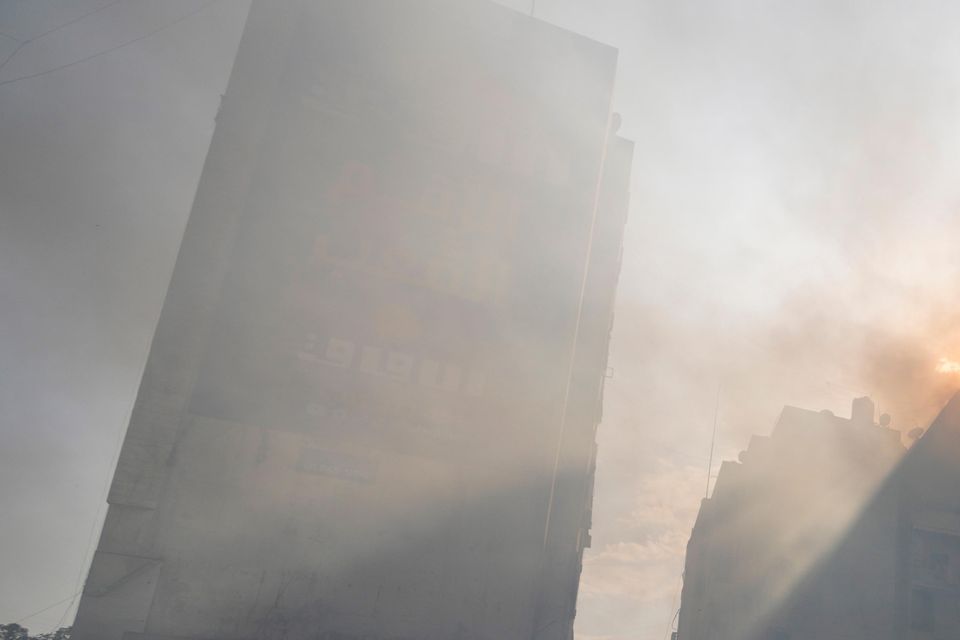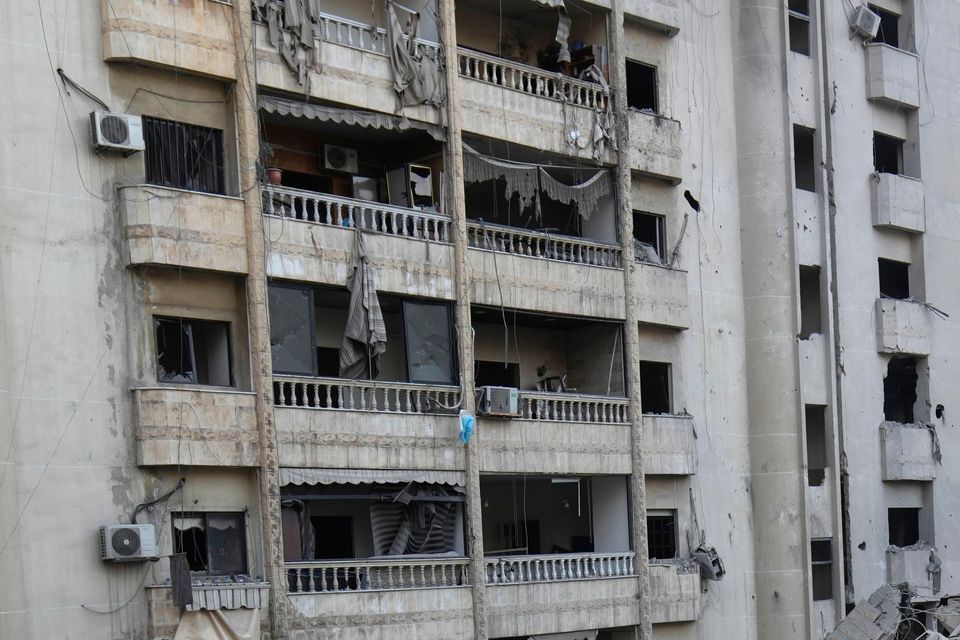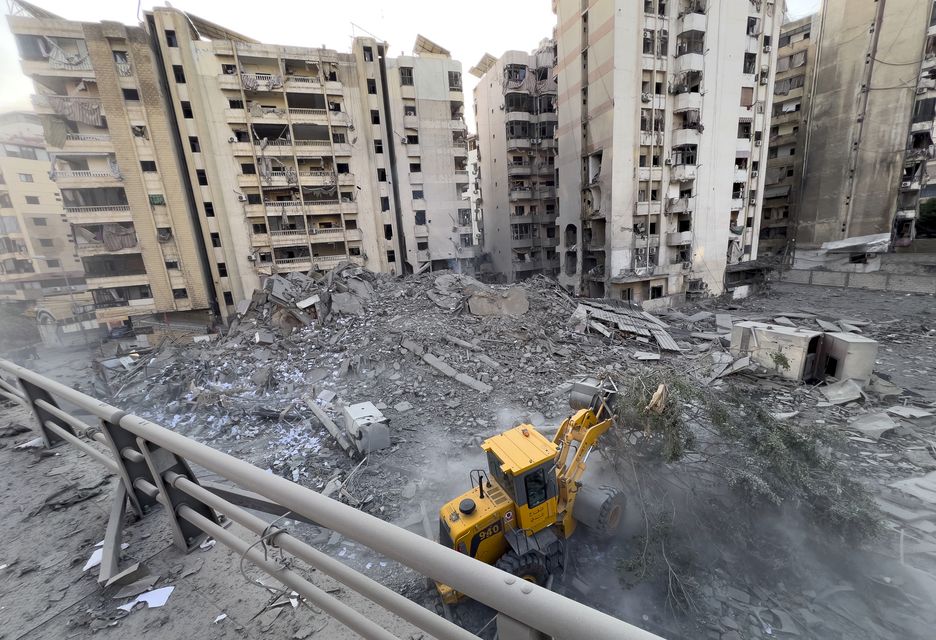Israel launched waves of deadly airstrikes across Lebanon’s north east that killed at least 45 people on Friday and transformed once-bustling neighbourhood blocks in Beirut’s southern suburbs into smouldering ruins.
The latest violence comes against the backdrop of the Biden administration’s renewed diplomatic push, days before the US election, to reach temporary ceasefire deals.
Israel has broadened its strikes in Lebanon to bigger urban hubs, like Baalbek, in recent weeks after initially targeting smaller border villages in the south, where Hezbollah draws deep support.
Smoke rises from the site of an Israeli airstrike in Dahiyeh, Beirut, Lebanon (AP Photo/Hassan Ammar)
Iran-backed Hezbollah doubles as a major political party and provider of social services in Lebanon.
Hezbollah began firing rockets, drones and missiles from Lebanon into Israel in solidarity with Hamas immediately after the Hamas-led October 7 2023 attack on Israel, which triggered the war in Gaza.
The year-long cross-border fighting boiled over to full-blown war on October 1, when Israeli forces launched a ground invasion of southern Lebanon for the first time since 2006.
In Lebanon’s north east — where small farming villages nestled between the country’s mountain ranges had largely been spared the worst of Israeli bombardment until last month — Israel conducted a series of heavy airstrikes Friday, killing at least 45 people, driving more families to flee with whatever they could carry and sending thick plumes of smoke over the horizon.
Intensified Israeli airstrikes on and around the north-eastern city of Baalbek this week have prompted 60,000 people to flee their homes and have emptied many small villages in the area, said Hussein Haj Hassan, a Lebanese official representing the region.
Rescuers searched for survivors after airstrikes killed seven people in Younine, a town in the Bekaa Valley, said Governor Bachir Khodr.
Smoke rises from a destroyed building hit by an Israeli airstrike on Dahiyeh (Hussein Malla/AP)
The strikes brought down a building believed to be housing 20 people.
Further Israeli strikes in the north east killed 11 people in the village of Amhaz, five people in the town of Nahleh and 14 others across the Bekaa Valley, Mr Khodr added.
Lebanon’s state-run National News Agency also reported that four others were killed in the small village of Ollak, bringing the total death toll from Friday’s attacks on the Bekaa Valley to 45.
There was no immediate comment from Israel on the deadly strikes.
In Lebanon’s capital of Beirut, Israeli planes pounded the southern suburb of Dahiyeh overnight and early on Friday for the first time in four days, spreading panic after a rare lull.
The Israeli military, which warned residents to evacuate at least nine locations in Dahiyeh, said it hit Hezbollah weapons manufacturing sites and command centres.
There were no reports of casualties from Dahiyeh, where fears of Israeli bombings drive a mass outflow of residents each night.
A worker uses a bulldozer to remove the rubble of a destroyed building that was hit in an Israeli airstrike on Dahiyeh (Hussein Malla/AP)
Bulldozers rumbled through clouds of dust and smoke on Friday, clearing rubble from the pulverised roads where Israeli warplanes had reduced dozens of buildings to their skeletal remains.
Formerly home to families and businesses, mid-rise apartment blocks were left open to the breeze, walls blown off and furniture buried.
Hezbollah supporters in several locations raised the group’s bright yellow banner atop the rubble.
Since the conflict between Israel and Hezbollah erupted last year, more than 2,897 people have been killed and 13,150 wounded in Lebanon, the Health Ministry reports, not including Friday’s toll.
Health authorities say that a quarter of those killed were women and children.
Overall, UN agencies estimate that Israel’s ground invasion and bombardment of Lebanon has displaced 1.4 million people. Residents of Israel’s northern communities near Lebanon, roughly 60,000 people, have also been displaced for more than a year.
Hezbollah has continued firing rockets into northern Israel, with projectiles launched from Lebanon on Thursday crashing into agricultural areas and killing seven people, including four Thai farm workers.


